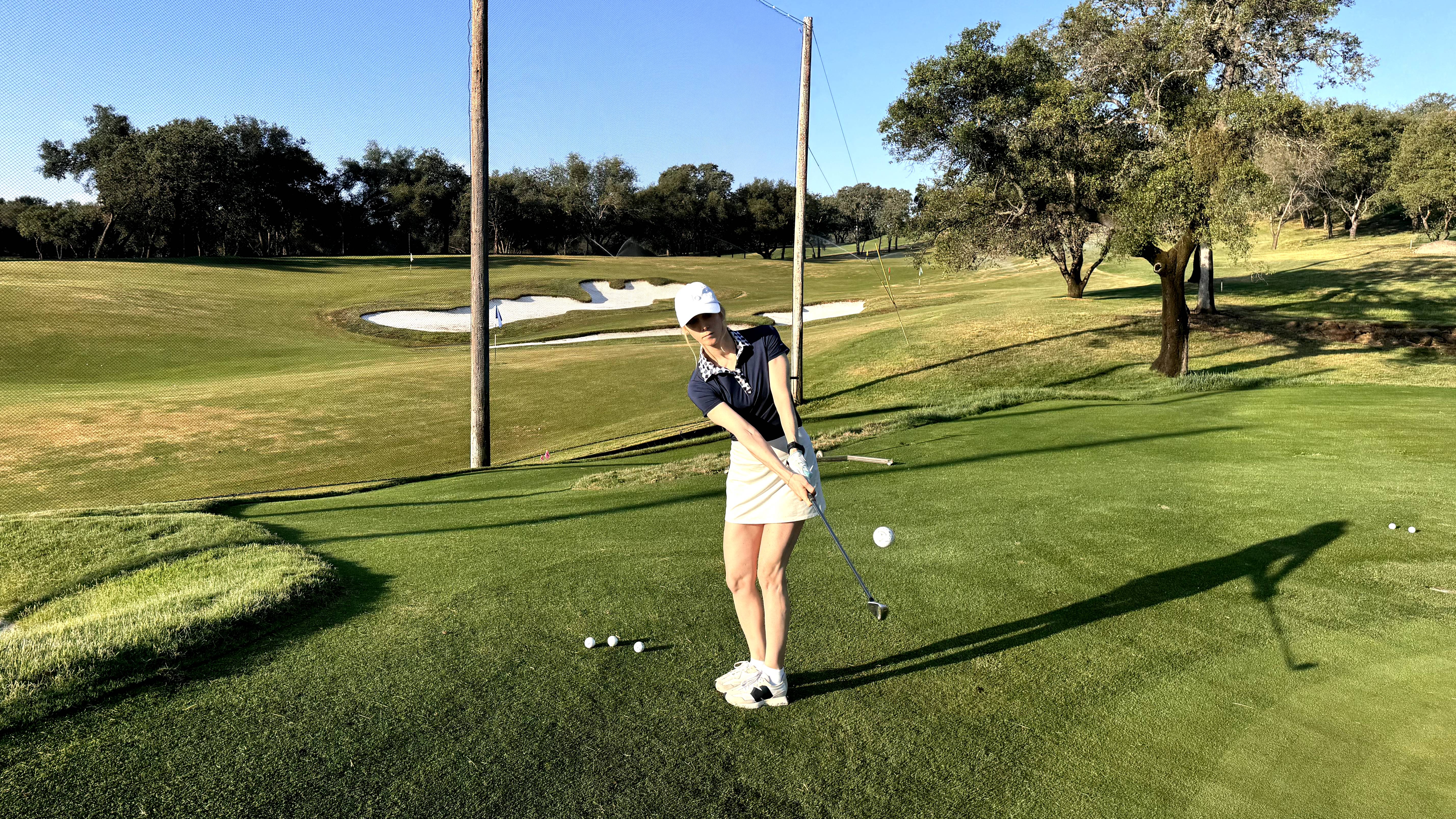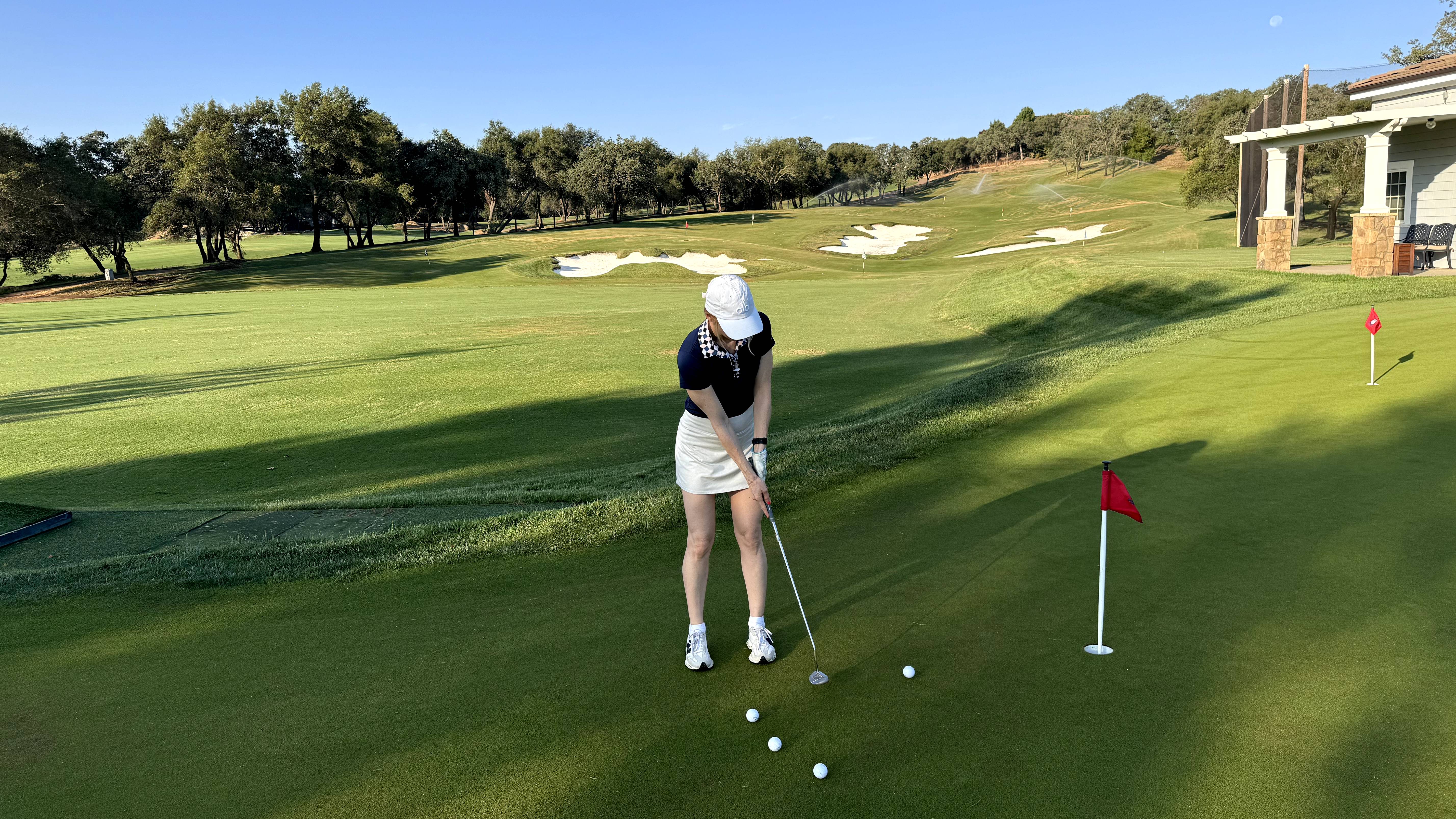Slow Down To Speed Up: 4 Ways To Quickly Improve Your Golf Game
Here are 4 handy tips if you are constantly asking yourself, 'When is it all going to come together?'


Ever feel like your golf game has a mind of its own? One day your drives are hitting fairways, but you’re topping your irons, while the next day, you’re slicing your drives into the woods but your approach shots are spot on. I’ve been playing golf regularly for about a year and for many months, each time I played, it was a gamble — and not to mention, extremely frustrating. I often asked myself: When was it all going to come together?
I was eager to get better, but, as I put small amounts of effort into practicing all parts of the game, and would see spurts of improvement only to regress into bad habits, it wasn’t translating into any sort of consistency.
As a new golfer, there’s a lot to remember: swing path, ball position, alignment, grip, hitting out of the sand, weight shift, uphill versus downhill lies. Before these techniques lock into muscle memory, they can get muddled up and become confusing, oftentimes doing more damage to your stroke than good. Was I supposed to grip up or down on that slope?
Many people golf for years and never figure out how to improve, and it all comes down to the way they practice, explains Sheryl Maize, a LPGA Top 50 Teacher.
If I wanted to see any solid improvement, I had to put in more efficient practice time – and for me, that was breaking down my game into bite-sized pieces, focusing on one aspect at a time for an extended time. This mindset made practice feel more structured. Plus, it was rewarding because I saw immediate improvement in what I was putting time into.
As a beginner, if you’re feeling overwhelmed trying to remember everything you need to succeed, try simplifying your practice with these four tips:
Set a Specific Focus For Your Practice Sessions
I was racking up a lot of strokes missing short putts, so I decided to start there. It was tempting to practice putting for 10 minutes and move to chipping, but I forced myself to stick with the putter.
Subscribe to the Golf Monthly newsletter to stay up to date with all the latest tour news, equipment news, reviews, head-to-heads and buyer’s guides from our team of experienced experts.
I started with short, 3-to-5 foot putts, focusing on the fundamentals of putting. After I was consistently making those putts, I played putting games to keep practice engaging, and slowly moved the ball back, paying attention to how my stroke changed when faced with a longer putt. I’d always come back to the short putts to really feel the difference. This helped with both distance control and stroke consistency. And guess what? I stopped missing those short putts during rounds.

Understand Why Different Clubs Have Different Outcomes
With her beginner students, Maize emphasizes understanding the reasons behind ball flight, club length, shaft lean, etc., so her students can truly understand how golf equipment works.
“I try to make it very basic and clear and the results are very rewarding,” says Maize.
Part of my effort to make smarter decisions on the golf course was knowing what club to use around the green. Chipping with various lofted clubs from the same distance was the perfect place for me to experiment.
When you’re 20 yards from the pin, using the same stroke with an 8 iron versus a pitching wedge versus a 56 degree wedge will result in a different ball flight and roll out. Remaining at one distance until I was confident with the stroke and the result, then moving further out and repeating this, gave me confidence when choosing the right club to chip with during rounds.

Keep Your Practice Sessions Short and Basic
Practicing for short amounts of time (even just 10 minutes) multiple times a week, tends to have better results than hours-long practice, when learning a new skill or implementing a swing change, says Maize.
Bunker shots for an hour would get tedious and may have the opposite effect you’re striving for if you’re not succeeding, leaving you frustrated and unmotivated to jump back in next time.
Keeping practice sessions at 30 minutes or less, focusing on the same movement to the same target with the same club, helps your brain register those changes, explains Maize. The goal is to be able to transfer this new skill to the golf course.
“Once you are getting successful and doing well, then you can start to mix it up.”

Practice a Pre-Shot Routine
Just as we’re trying to lock in aspects of the golf swing into muscle memory, practicing a pre-shot routine creates a physical habit that’s easy to replicate and has great mental benefits during play.
There’s no template for pre-shot routines, but some basic guidelines are keeping it less than a minute and including aspects that will cut down your time over the ball, which can lead to over-thinking (and mis-hitting). Many pros suggest taking in an overview of your surroundings, checking alignment and posture, followed by a deep exhale. Now that your mind is clear and your body relaxed, you’re ready to swing, focusing on the new skill you’ve been practicing.

Lauren Katims is a freelance writer and editor in Northern California. Over the past couple years, she’s become slightly obsessed with everything golf, including working on the mental aspect of her game as much as the technical skill set.
Lauren is lucky enough to have a group of inclusive and motivating women at her local golf club with whom she plays weekly. Follow along on TikTok @Lkgolfs.